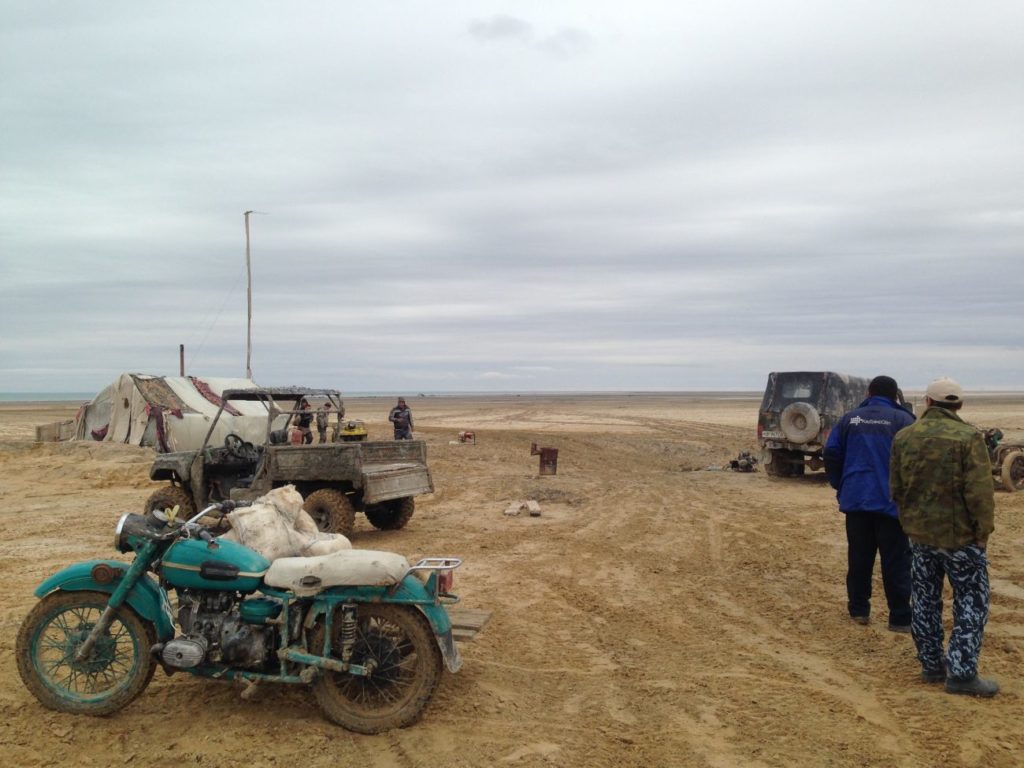The artemia, or brine shrimp, a small crustacean that lives in salt water, has become the main product of the Aral Sea in Uzbekistan. The Uzbek government has recently centralised artemia production into a single company, a plan which did not seem to please everyone on the ground.
This article was originally published on Novastan’s French website on 21 July 2020.
The Aral Sea was the fourth largest lake in the world 60 years ago. Today, it has almost completely been dried out due to human activities, causing the disappearance of millions of fish and reducing the number of species by five. However, despite this environmental disaster, one species has survived: the artemia. With the sea now dried up, local fishermen have turned to this saltwater shellfish to generate the majority of their income. The fishermen of Moynaq, in western Uzbekistan, have thus started collecting and processing these shrimps due to the shortage of fish.
Want more Central Asia in your inbox? Subscribe to our newsletter here.
The shrinking of the Aral Sea has increased the salinity of the water which explains the growing numbers of artemia, which thrive in very salty water. The 1 millimetre-long crustacean is generally used to feed fish but also has uses in science, fishkeeping, medicine, pharmacy and cosmetics. The larvae (known as cysts) can be stored for years and can withstand extreme differences in temperature.
Towards a monopoly
But the future of the artemia industry has been a source of controversy since since 2019. On 31 October 2019, the Uzbek government proposed that the 23 or so companies involved in the artemia industry be centralised into just one.
Despite the Antimonopoly Committee of the Republic of Uzbekistan’s protests and the recommendations against the project it published on 15 June 2020, Uzbekistan’s prime minister Abdulla Aripov signed a decree on 14 July of the same year creating a state-owned company responsible for the capture, processing and export of artemia cysts. The new structure, Orol Artemia Sanoat, is also meant to support the scientific, technical and technological development of the industry.

The Antimonopoly Committee of the Republic of Uzbekistan deemed this centralization ill-advised, an opinion it supports through a text recommending the Uzbek government be less involved in the economy. This point of view is in line with the political philosophy of President Shavkat Mirziyoyev, who says he wants to privatise the domestic economy by limiting state intervention.
Lack of data
It is difficult to measure the impact such a decision has had and will continue to have on the market. In 2020, Novastan attempted to obtain information locally but very few people were willing to talk about it. In fact, the lack of transparency and the strained context surrounding the negotiations over the last few weeks meant the fishermen of Muynaq did not wish to comment.
Only the press office of the Antimonopoly Committee of the Republic of Uzbekistan agreed to answer Novastan’s questions, stressing the importance artemia represents for the country. The head of its press service, Manzura Khasanova, said that data regarding the selling price and volume of export of artemia and industry wages did not exist. As for the land and sea portions where artemia is collected, they are under the supervision of the State Committee of the Republic of Uzbekistan for Geology and Mineral Resources.
Although instinctively artemia collection doesn’t seem to be a very sensitive industry, it remains opaque and very closed off in Uzbekistan. The only available data come from the international trade association Global Aquaculture Alliance, which ranked Uzbekistan among the world’s leading suppliers of artemia in 2017, with over 20 tons produced per year.
From the Uzbek side, little information is available to the public. Muynaq-based producers created an association in 2018 to lobby for transparency as well as promote export, but without providing much more detail so far.
The fishermen of Muynaq have been gathering, processing and selling artemia larvae since the early 2000s, when the world’s demand totalled 2,000 tons per year, according to scientific research. A small shellfish, then, but a major economic lifeline for the fishermen of Muynaq.
Malaurie Le Bail
Novastan.org
Translated from French by Manon Montant
Edited by Alice Coveney
For more news and analysis from Central Asia, follow us on Twitter, Facebook, Telegram, Linkedin or Instagram.
 The Aral Sea artemia: small shrimp, high stakes
The Aral Sea artemia: small shrimp, high stakes 




И.М. Мирабдуллаев, 2021-04-12
http://sreda.uz/rubriki/voda/artemiya-aralskogo-morya-chego-ot-nee-zhdat/
http://sreda.uz/rubriki/voda/sotnya-nauchnyh-ekspeditsij-na-bolshoj-aral-za-18-let/
more recent information
Reply
И.М. Мирабдуллаев, 2021-04-12
http://sreda.uz/rubriki/voda/sotnya-nauchnyh-ekspeditsij-na-bolshoj-aral-za-18-let/
Reply